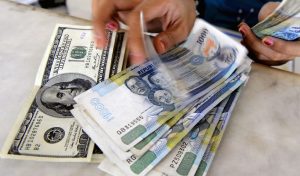Philippine central bank Governor Eli Remolona signaled officials are intervening to defend the peso at the 57-per-dollar level to prevent the currency from weakening further.
“There are resistance levels, and when those are crossed, you’ll suddenly see trades in the same direction. There’s herding,” Mr. Remolona said in an interview Monday, when asked if the central bank has been keeping the exchange rate from breaching 57 per dollar.
The peso is among the worst-performing Asian currencies this quarter, dropping nearly 3% against the greenback. While a selloff in emerging markets on speculation interest rates will stay elevated in the US is bolstering the dollar, the peso is hit harder than most peers.
The Southeast Asian nation imports almost all of its oil requirements, and crude prices marching toward $100 a barrel are weighing on the peso. The elevated global cost of rice, a staple food, is also hurting sentiment.
“There are narratives in the market that are sometimes wrong. That pushes the peso in the wrong direction and that calls for some intervention and some clarification,” the Bangko Sentral ng Pilipinas (BSP) governor said in his office in Manila, referring to speculation the currency would weaken further.
The support level for the peso is 57 against the dollar, he said. The currency was little changed at 56.785 on Monday, after touching 56.99 earlier this month.
The deepening losses may prompt BSP to intervene more aggressively to protect the currency, similar to last year when it spent billions of dollars from its reserves as the peso plummeted to a record low of 59 against the dollar in late September.
Mr. Remolona said he isn’t worried the peso will weaken back to 59 per dollar.
“If all currencies weaken along with the peso, that is dollar strength and not peso weakness,” he said. “The reasons for that will probably be global reasons, general uncertainty, and we won’t be intervening a lot.” — Bloomberg
